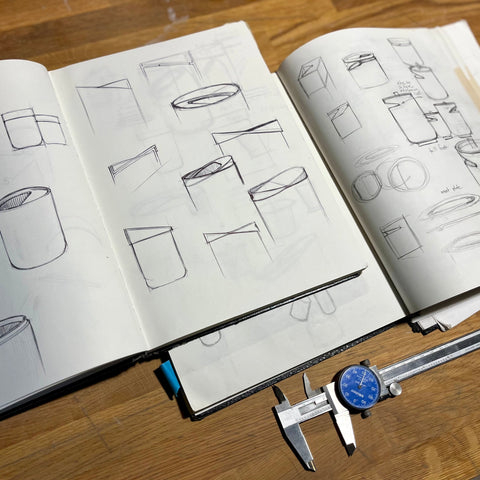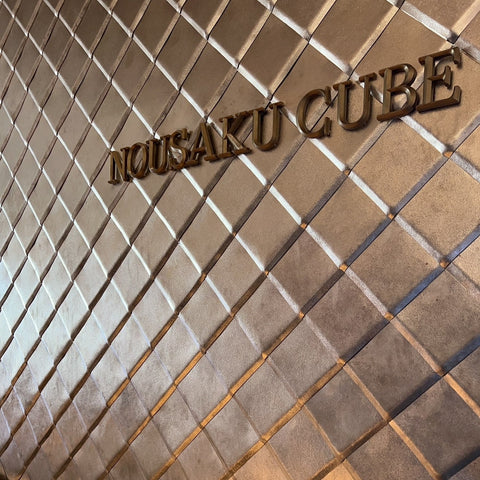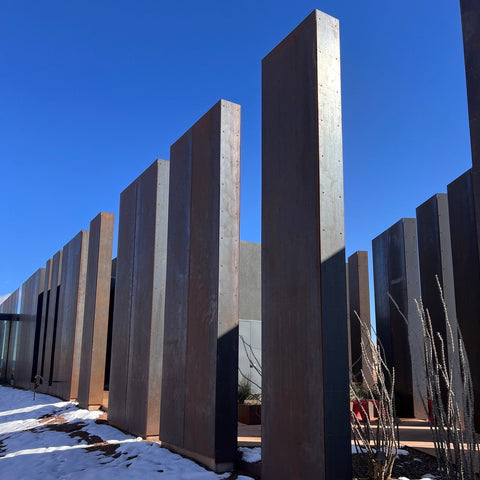For the past couple of years we've enjoyed working with Shu Boku of Cassette, a small design and furniture making company based in Nagoya, Japan. We presented their Plank Bench in our shop and it was an immediate hit with our customers who appreciated its simple, universal design that incorporates classic Japanese woodworking techniques. We're kicking off a series of designer interviews which will appear in our blog from time to time with an interview with this valued partner:
Who are you and how did you and Cassette begin?
After studying business management in college, I took a sales position at a major power tool company, which brought me my first exposure to wood working. But, really, it was a latent interest and appreciation for the structural design and aesthetics found in Japanese temple and shrine construction, and extending out to Scandinavian design and the works of George Nakashima, Isamu Noguchi and others that inspired to me to take on furniture design and construction. I took on the journey to polish myself as craftsman and artisan, and, after formal and informal training at a variety of places opened Cassette in 2012 in Nagoya, Japan.
How and where did you learn your craft?
When I made the decision to enter the world of furniture making, I enrolled into an arts and crafts institute in Kyoto. There, I learned the fundamental techniques of traditional woodworking and how to employ various tools to work with wood. I then spent time at furniture workshops in Gifu and Aichi prefectures to further learn the trade in a real-world setting. But, by really getting schooled in the disciplines of the art and tradition while in Kyoto was I able to then break out and add my own sense of design.

What do you still hope to learn/accomplish with your craft?
I am constantly looking for new techniques or approaches that I can learn from, not just in woodworking but in other arts as well, utilizing washi, bamboo, dyes, leathers, embroidery, metals, and so on. I very much hope to incorporate these more into my work.
What traditions of furniture making inform your craft? What traditions do you want to transcend?
Furniture design and manufacture is a pursuit with relatively a short history in Japan, however the craftsmanship and design employed in the “sashimono” joinery and construction at Japanese shrines and temples was a real inspiration and serves as the basis of my approach to the craft. Where these designs inspire, I chose to interpret and utilize them in an unorthodox and playful spirit that has become the trademark of Cassette.
While the highly technical and exacting tradition of Japanese wood joinery forms the core of my approach, I strive to achieve an overall beauty and simplicity in Cassette design and it has since become our signature style. Our sensibility finds its foundation in tradition, but our handcrafted and lighthearted approach sets us apart, I believe. Without putting tradition too front and center, we respect and utilize it, but do not let it limit or dictate our designs. We also look beyond furniture and architecture for inspiration, drawing upon industrial design, arts, music, fashion and world cultures.
How does being located in Aichi/Japan influence your design?
Aichi prefecture is located in the center of Japan and has long been at the center of industry. A blend of global corporations and small neighborhood workshops that share a passion and technological acumen for quality bring a unique vibe to the area, but also allows opportunities for collaboration with a variety of craftsmen and artisans from other trades, such as ceramics, textiles, dyeing and Washi paper. It’s really an interesting mix of the technical with the artistic. It also happens to be the prefecture with by far the greatest number of temples in Japan so it is never hard to find a little inspiration.
How does material influence your work?
Materials are the soul of Cassette designs. Every material has its own character, but I like to think of how to keep the essence of that material when I use it. Even a very humble or ordinarily unattractive material can have appeal, and I enjoy finding it and utilizing it.
On what’s become known as one of our signature designs, the Bitter side cabinet, I intentionally used underappreciated woods and treated them using a traditional pigmentation of persimmon tannin to bring it alive. Core to my thinking is to select materials with the right character and that allow me to bring a design to realization.
What pieces that you made do you especially appreciate?
It’s difficult to say, in that I feel that none of my works are truly complete, but I would say that the Plank Bench expresses the Cassette spirit of playful design with technical accuracy well; it is a blend of bold Oregon Pine along with minute details that can only result through handcrafted workmanship. Above all else, simplicity in form with a sense of balance I find appealing.

What makes Cassette and your furniture unique?
Exacting and highly technical craftsmanship balanced with clean aesthetic sense that doesn’t take itself too seriously. Our designs convey a modern, urban feel yet also have a natural warmth inherent in being hand-crafted. The pieces are not defined by any one single element, but are multi-dimensional in terms of use of materials and mood; bringing balance to these seemingly conflicting materials is the challenge but also the heart of our approach. We build our pieces to last, and intend for them to be used in a practical, functional sense, but we also want them to reflect the lifestyle of the owner as well as add to their surroundings; the pieces are designed such that they are “subtly arresting” when standing alone or when grouped in a setting. That sounds like an oxymoron, but we believe an understated design backed up by intriguing technical construction makes for an interesting and compelling end product.
What do you hope to do with Cassette as a business? Future projects?
While continuing to focus on the craft and creating new pieces, we hope to share our work more broadly, and expose those with a shared aesthetic sense to our designs. It’s my strong hope to show Cassette pieces on an international forum one day. In addition to CANOE, Cassette pieces are sold through select outlets in New York and Copenhagen. Of course, my dream is for our pieces to be found in homes around the world, but I do not want to break away from approach of making a few pieces at time, focusing on quality, all by hand. That’s the essence of Cassette design philosophy and what motivates me.
Do you travel much? Where are your favorite places to travel to?
Although I’ve been fortunate to travel around South-East Asia and Europe, I’m most content exploring the countryside of Japan, doing things like finding new onsen hot spring areas and snowboarding, especially the mountainous areas of the Tokoku region.
What do you do when you’re not working?
Spending time with my daughter, skateboarding, snowboarding, but also just making time to let my mind wander.
What household item can you not live without?
A pen. One never knows when an idea will strike.
What drew you to Canoe?
I first learned about CANOE via an interest in Portland and what I would call the Portland vibe. I could appreciate the culture and lifestyle that is unique to Portland and Oregon, and felt an immediate familiarity. This prompted me to reach out to the folks at CANOE and things went from there. I should also note that a lot of the woods we use originate in Oregon, so we feel it nice to see the material return to their original land. We are truly grateful to CANOE for allowing us such an opportunity.





